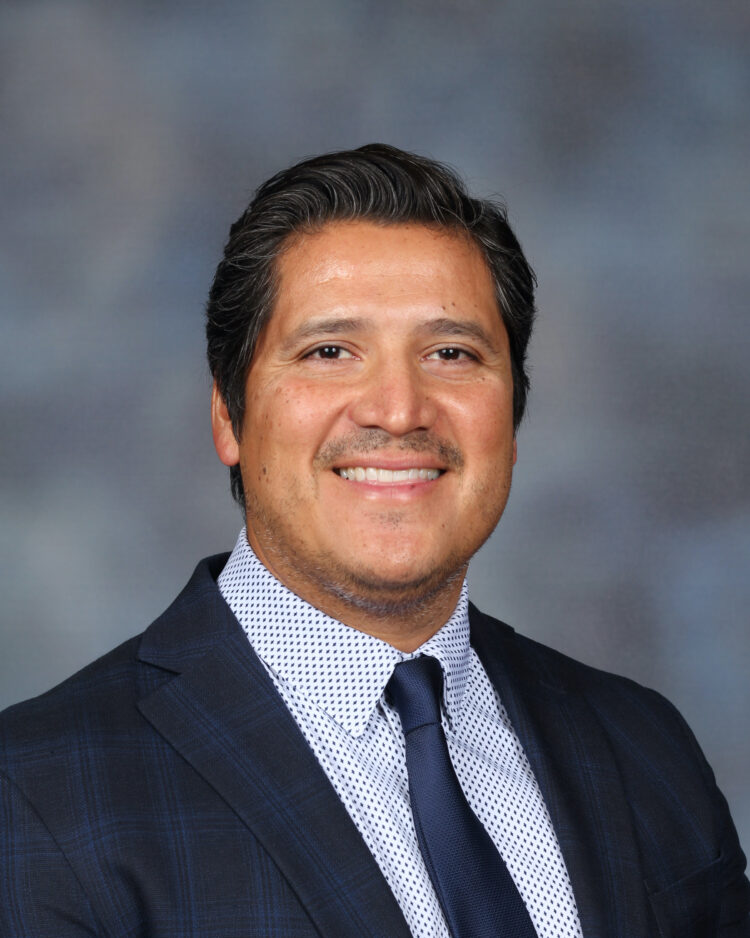Davis School District ‘moving forward’ in dealing with discrimination, harassment
- A screen grab from one of the Davis School District’s videos targeting racism, part of the “No More, Not Here” video series, unveiled Jan. 10, 2022. The district launched the initiative in response to a settlement agreement with the U.S. Department of Justice calling on it to bolster efforts to deal with racial harassment and discrimination.
- Fidel Montero, a new assistant superintendent in the Davis School District. He started Monday, Aug. 8, 2022, and will help oversee district moves to bolster efforts in dealing with racial harassment and discrimination.
FARMINGTON — Nearly 10 months after the release of a bombshell U.S. Department of Justice report finding “persistent failures” in the Davis School District’s response to reports of race-based harassment and discrimination, school leaders have taken numerous steps to fix the wrongs.
“We’re obviously moving forward,” said John Zurbuchen, an assistant Davis School District superintendent who’s helped shape the school system’s response.
Notably, the district has created a new office focused on handling reports of harassment and discrimination, the Office of Equal Opportunity, or OEO. It’s also crafted a new nondiscrimination policy, approved by the school board on Aug. 2, and hired several staffers to oversee the efforts, including two new high-level officials brought on since April. Coming soon, probably by Aug. 22 — the first day of classes for the 2022-2023 school year — is the launch of an online portal to report complaints, the Harassment and Discrimination Reporting System.
Indeed, Zurbuchen said the 2021-2022 school year was a “transition year,” meant to lay the groundwork for change in the district aimed at better addressing reports of mistreatment involving students of color. Now the rubber hits the road, so to speak.
“This new school year, ’22-’23, really is in (Department of Justice officials’) estimation and ours, it’s year one of the actual work, not just the preparation,” Zurbuchen said.
There had been rumblings last year that DOJ officials were scrutinizing Davis School District, focus of on-and-off media attention over the years stemming from periodic racial incidents. Then came the announcement nearly 10 months ago on Oct. 21, 2021, that the department and school district had entered into a settlement agreement to address race discrimination in the system’s schools.
The department also issued a scathing critique of the district.
“The investigation revealed persistent failures to respond to reports of race-based harassment of Black and Asian-American students by district staff and other students,” reads the DOJ press release on the matter from last October. The review, focused on the 2015-2020 time frame, “found hundreds of documented uses of the N-word, among other racial epithets, derogatory racial comments and physical assaults targeting district students at dozens of schools. The department concluded that for years, Davis’s ineffective response left students vulnerable to continued harassment and that students believed the district condoned the behavior.”
What’s more, the district disciplined Black students “more harshly than their white peers for similar behavior,” the DOJ went on. Within the district, 81.7% of students were non-Hispanic whites and 18.3% were students of color, according to state data for the 2021-2022 school year. Just 797 students, 1.1% of the total, were Black.
What followed were a series of shifts and changes to address the situation, per terms of the settlement agreement. Jackie Thompson, a former Davis School District employee, came out of retirement to become an assistant superintendent to aid in the initial response. The district launched a video campaign geared to students to fight racism and discrimination, “No more, not here.”
The 26-page settlement agreement between the school district and the DOJ spells out many more specific steps the district needs to take, and district officials have been chipping away at them. The DOJ will likely keep monitoring the district for compliance with the accord through the 2024-2025 school year, but in the meantime, here are some of the measures and steps the district has taken so far:
Staffing: The district hired a new assistant superintendent, Fidel Montero, who started Monday and will help lead the Office of Equal Opportunity. He most recently served six years as principal of Timpview High School in Provo, among many other educational postings.
Zurbuchen has been handling oversight of the OEO since Thompson retired again last spring and will turn those duties over to Montero, an immigrant from Mexico.
Last April, the district hired Kenneth Auld, who will answer to Montero, to serve as director of the OEO. Auld had been working as a human resources administrator in the Jordan School District, where he spearheaded cultural awareness training. “He also helped break hiring barriers, allowing more teachers of color to be recruited and reflect district demographics,” reads a Davis School District press release on his hiring.
Zurbachen said three district coordinators and five school coordinators, responsible for investigating claims of racial harassment and other misdeeds, have also been brought on board in the OEO.
Portal: The claims the new district and school coordinators review will be submitted through an online portal that is nearly ready to go live, the Harassment and Discrimination Reporting System, or HDRS.
“It is really close to rollout,” Davis School District Superintendent Dan Linford told the school board at the body’s Aug. 2 meeting.
The website is modeled after the SafeUT.org website, the crisis chat and tip line for students, parents and educators, Zurbuchen said, and those making complaints may do so anonymously. “We take anonymous (complaints) just as serious as those that are attributed,” he said.
Policy updates: Related to the planned complaint portal, the Davis school board on Aug. 2 approved the district’s new nondiscrimination policy, which calls for creation of of the HDRS, among other things. It had been in the work for more than four months and faced review by the DOJ.
The district had a policy on dealing with racial harassment, but the new one adds details. “It’s just now been beefed up to be more explicit in terms of process and timeline,” Zurbuchen said.
Per the policy, complaints are to be processed with completion of a final report within 10 business days of being reported, barring extenuating circumstances. If harassment or discrimination is deemed to have occurred, the policy spells out a range of possible disciplinary and remedial measures to address the situation, including suspension, increased adult supervision, transfer to another school, completion of sensitivity training, no-contact orders and more.
Board member Cheryl Phipps, speaking at the Aug. 2 meeting, lauded what she said was the focus on remedial action to address findings of harassment or discrimination, at least in cases not involving violence or extreme activity.
“I hope that most of the things that happen will be just poor judgement and things like that,” Phipps said. “I appreciate that there’ll be work with the student and with the victim in these cases. I think that we have conversations, and I appreciate that with this.”
The policy requires all district employees to report instances of student-on-student or staff-on-student harassment or discrimination. Employees must report incidents they are aware of “regardless of whether the employee witnessed the incident or learned of the event from someone else,” the policy reads.
Outreach: The district is also in the process of crafting an engagement plan to get word out about the efforts to deal with discrimination and harassment.
The DOJ agreement requires the district “to be more intentional” in having an outreach strategy to students, parents and the broader community, Zurbuchen said. “Having (a policy) is one thing. Making sure it’s communicated, talked about, is another,” he went on.
District officials on Aug. 2 also approved a policy change spelling out that school officials can’t deny a request to form a student club “on the basis of race, national origin, color, sex (including sexual orientation and gender identity), disability or religion.” That came in response to DOJ findings that Black students seeking formation of clubs that could serve as forums for “addressing common experiences” had been rebuffed.
With some of the varied changes in place, district officials will now see how they work out, possibly tweaking them along the way. “We built most of the machine. Now we’ll see how well the machine works once the school year starts,” Zurbuchen said.
At the same time, what happens longer term, beyond 2025 — the preliminary timeline for district compliance with the settlement agreement — remains to be seen. “There’s really been no conversation about what happens after we’ve complied with the settlement agreement. The conversation’s all been about what do we do right now to comply and provide this best opportunity for our kids,” Zurbachen said.




